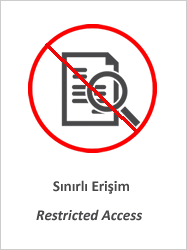Fabrication of Polycaprolactone-Chitosan/Curcumin Polymer Composite Fibers and Evaluation of Their in Vitro Release Kinetic Behavior and Antibacterial-Antifungal Activity
Citation
ÇİFTÇİ, Fatih & Ali Can ÖZARSLAN. "Fabrication of Polycaprolactone-Chitosan/Curcumin Polymer Composite Fibers and Evaluation of Their in Vitro Release Kinetic Behavior and Antibacterial-Antifungal Activity". Journal of Sol-Gel Science and Technology, (2023).Abstract
Microencapsulation is an attractive method in the production of controlled release and targeted delivery systems and is widely
used to increase the bioavailability of antimicrobial molecules. Chitosan (CS) is commonly used as the wall material of
microcapsules and demonstrates antibacterial and antifungal features. In this study, curcumin (CUR) and CS as bioactive
substances were loaded in polycaprolactone (PCL) by microencapsulation method. The electrospinning method was used for
the production of microencapsulated biomaterials as polymer composite fibers. SEM analysis of polymer composites was
performed and the fiber size of PCL-CUR/CS composite fiber was measured as 248.71 ± 98 nm. The bioactive release kinetics
correlation coefficient (R2
) value and mathematical model of the polymer compounds were analyzed as PCL-CS/CUR; 0.98,
Zero order, PCL-CUR; 0.93, Korsmeyer-Peppas and PCL-CS; 0.95 Higuchi, respectively. Antifungal activity experiments
were performed on the obtained polymer composite fibers and the minimum inhibitory concentrations of PCL-CS, PCL-CUR,
and PCL-CS/CUR composite fibers against Aspergillus niger were determined as >5000 ppm, 750 ppm, 2500 ppm, and 2500
ppm, respectively. The minimum inhibitory concentrations of PCL-CS, PCL-CUR, and PCL-CS/CUR against Penicillium
digitatum were >5000 ppm, 250 ppm, 1666 ppm, and 1666 ppm, respectively. These results revealed that PCL/-CS/CUR
polymer composite fibers may be used as both antifungal and antibacterial bioactive material in tissue engineering applications.



















